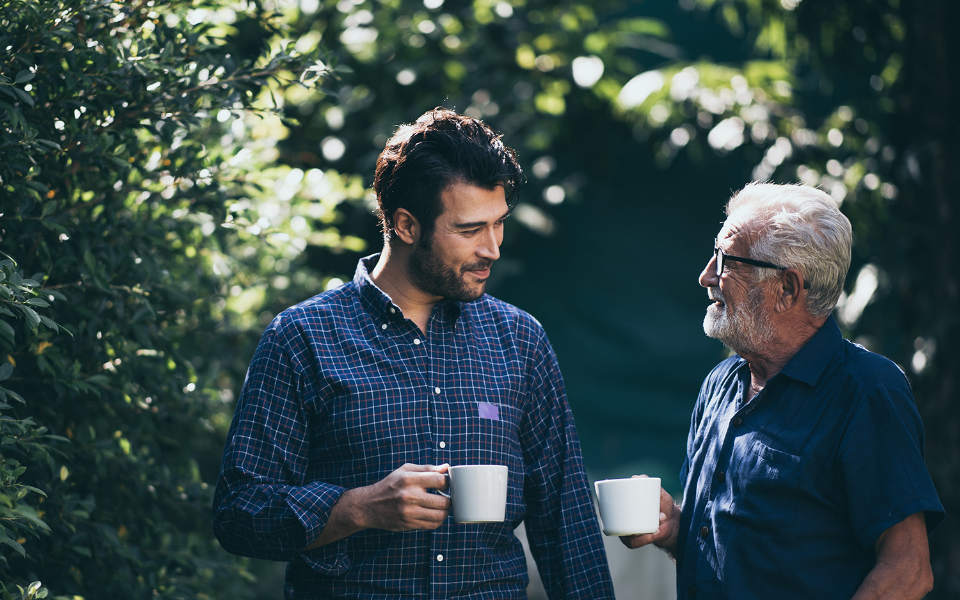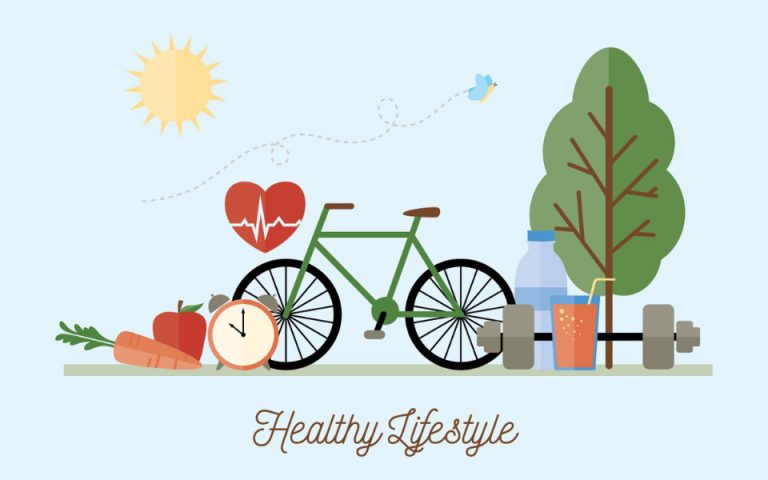Would you like to live a longer healthier life?
Your lifespan, to some extent, is determined by your genetics, but your lifestyle may have more of an impact on your longevity than you think!
“Blue Zones” are geographic areas that are home to some of the oldest people in the world.
The people in these regions don’t just live longer; they have lower rates of chronic diseases, cancer, diabetes and obesity compared to anywhere else in the world.
So they must be doing something right!
The term “Blue Zone” was coined by Dan Buettner, who studied the parts of the world where people lived exceptionally long lives. They are called Blue Zones because of the blue circles Buettner had drawn on the areas of the map he and his colleagues studied.
According to Dan Buettner – explorer, National Geographic Fellow, journalist, producer and bestselling author – the residents in these Blue Zones are outliving us because they have worked out what everyone else hasn’t!
It was in 2004, when Buettner – together with anthropologists, demographers, epidemiologists and other researchers – travelled around the world to specifically study these communities that had a high percentage of nonagenarians and centenarians – people that live to be over 90 and 100.
They interviewed dozens of people who lived to 100 years old, on their diet, sleeping habits and day to day activities. Their research showed all of these people shared something in common.
So what is it that these people do differently to everyone else?
We’re glad you asked that question! In this article, we will take a look at what their secrets are, what their lifestyle looks like and how it results in them living a healthier and longer life.
And the good news is that you don’t have to live in any of the Blue Zones to incorporate these simple habits into your lifestyle and potentially add years on to your life!
So where are these mysterious regions located?
Where Are the Blue Zones in the World?
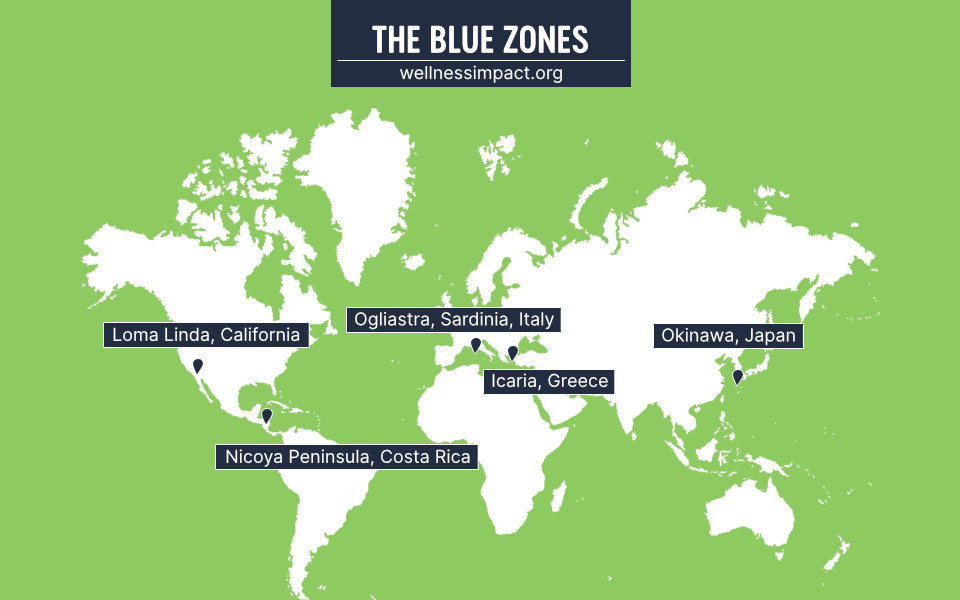
Dan Buettner figured out that there were at least five Blue Zones in the world, where people were living past the 100 mark. These zones are:
Icaria: Icaria is an Island in Greece where the residents eat a Mediterranean diet consisting of plenty of olive oil and vegetables. Research shows that the Mediterranean diet promotes brain and physical health and keeps chronic diseases away.
Ogliastra, Sardinia: Ogliastra – a region of Sardinia in Italy – is where some of the oldest men in the world live. These locals live on mountainous regions and normally work on farms.
Okinawa: Okinawa, in Japan, has some of the world’s oldest women. Their diet consists of soy-based foods and they also practice a meditative exercise known as “tai chi”.
Nicoya Peninsula: Nicoya in Costa Rica is home to people whose diet is mainly beans and corn tortillas. They have physical jobs, even into old age, and have a sense of life purpose which they’ve called “plan de vida”.
The Seventh-day Adventists in Loma Linda, California: This group of people in California, USA are very religious, live in tight-knit communities and are strict vegetarians.
We can see that these five zones are in different parts of the world; however there are a number of habits that all of the residents share.
According to an article written by Ruairi Robertson, “Why people in ‘Blue Zones’ live longer than the rest of the world”, Healthline, 29th Aug 2017, studies have shown that ”genetics probably only account for 20-30% of longevity”. This means diet and lifestyle contribute largely to your lifespan.
So what do the Blue Zones have in common in terms of their diet and lifestyle?
Let’s first look at how these people eat, and how you can get tips from their longevity habits, regardless where you live.
People in the Blue Zones Eat a Diet Full of Whole Plant Foods
The people in the Blue Zones all have one similarity in their diet and that is it is 95% plant based.
Not all of the groups are strictly vegetarian, but when they do eat meat, it’ll only be about five times a month.
Studies have shown that avoiding meat can greatly reduce the mortality risk caused by heart disease and cancer.
What Exactly Are the Blue Zone Diets Rich in?
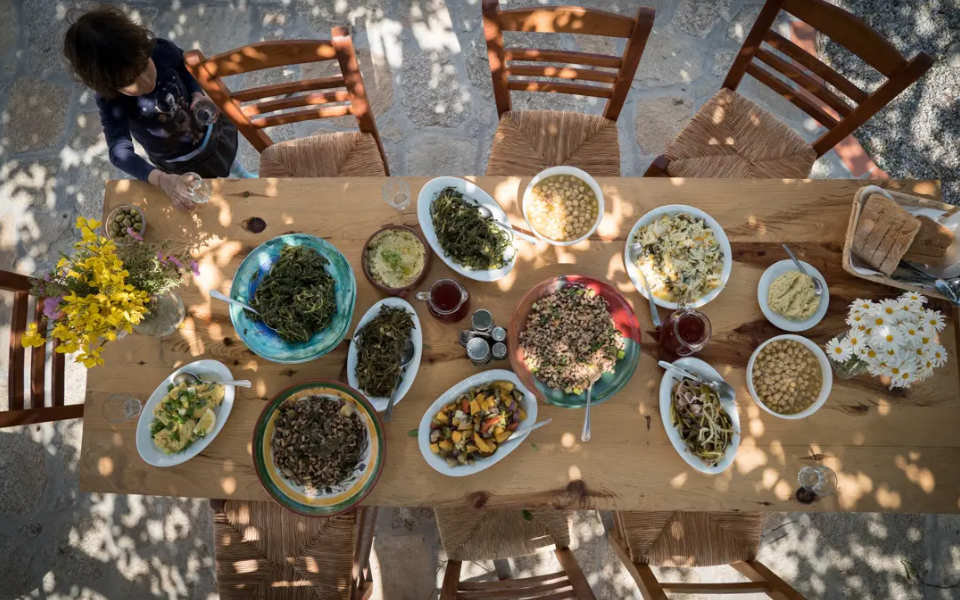
Vegetables: Vegetables are rich in fibre, vitamins and minerals. Studies show that eating five portions of fruits and vegetables daily can reduce the risk of heart disease, cancer and death.
Whole grains: These are also a good source of fibre. Research shows that a diet rich in whole grains can lower blood pressure. Another study showed that high fibre intake is linked to reduced death caused by Heart disease.
Legumes: Lentils, chickpeas, beans and peas are all types of legumes, and they’re all a good source of fibre and protein. According to research, consuming legumes is linked to lower mortality.
Nuts: Nuts are rich in fibre, protein and polyunsaturated and monounsaturated fats. When nuts are eaten alongside a diet that’s healthy, they’re linked with reduced mortality according to research.
They Eat Less Dairy and Eggs
In four of the Blue Zones, there is a low consumption of cow’s milk products. In Ikaria and Sardinia, the residents consume goat and sheep products.
The locals in all of the Blue Zones consume eggs two to four times a week, but it’s normally just one at a time, and it’s usually part of a dish instead of being the main source of protein.
Healthy Beverages
Drinks that are consumed regularly in the Blue Zones include tea, coffee and water. According to Buettner, they drink herbal tea all day. Green tea is common in Okinawa, and in Ikaria, they drink a tea that’s made with oregano, rosemary or mint.
Coffee is also consumed in the mornings in most of the Blue Zones; however the Seventh Day Adventists in Loma Linda tend to avoid caffeine.
Processed and Packaged Foods are Avoided
The diets in the Blue Zones are low in sugar, pesticides and artificial ingredients.
They do treat themselves and use small amounts of natural sweeteners on occasions; however refined carbohydrates and artificial flavours are a rarity.
Fasting and Eating Fewer Calories
Another factor that may contribute to the long lives in some of the Blue Zones is eating fewer calories.
A common practice among the Okinawans, is following the 80% rule, which they’ve named “hara hachi bu”. These locals stop eating when they feel 80% full, rather than 100% full.
By doing this, they don’t overeat which could then result in them gaining weight and chronic disease.
Interestingly, studies show that slow eating can reduce hunger and you’re more likely to feel fuller, than when you eat at a faster pace.
As well as consuming lower calories, fasting seems to have a positive impact on health.
Many Icarians, for example, are Greek Orthodox Christians. There are many periods throughout the year in which they fast.
Research has shown that these periods of fasting resulted in lower blood cholesterol and lower BMI (body mass index).
Another study showed that other types of fasting such as intermittent fasting (fasting for certain hours in a day, or certain days in a week) reduces the risk of chronic disease.
Their Environment is Set up for Healthy Living
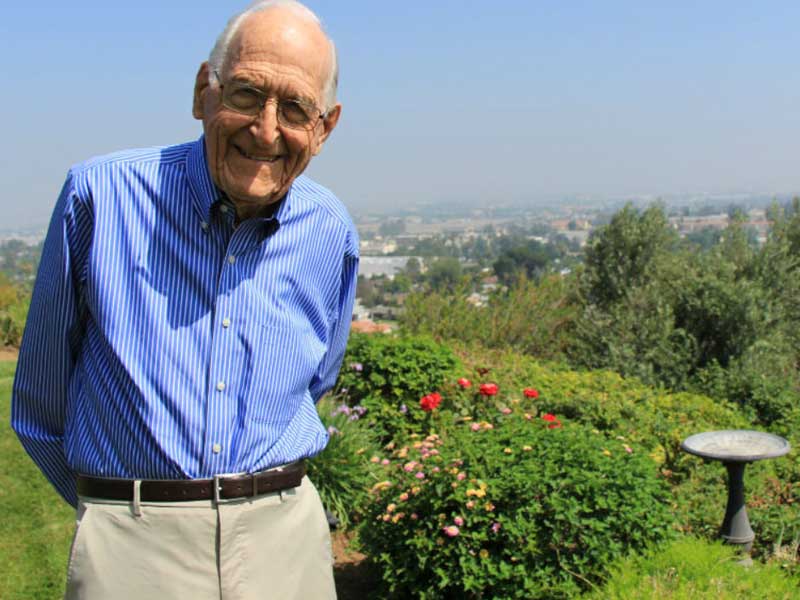
None of the centenarians in the Blue Zones were on and off diets, and none of them were obese!
Instead, healthy eating is just a way of life for them, and something they had in common with those that they spent time with.
Those in the Blue Zones don’t live to eat, they eat to live! This is their mentality towards food, and for them, meal times are an opportunity to connect with others and family, and a time for gratitude.
In an article written by Hilary Brueck – “The man who unlocked the world’s secret to living to age 100 says you can skip the gym”, Insider, 5th Dec 2019 – Buettner said that there is no quick fix when it comes to longevity.
He went on to say that there’s no supplement or pill, and if you’re not willing to do something for years or decades, don’t even bother!
One way to eat well is to emulate the environment and habits of these people. You can do this by setting up your own environment for success, starting with your home.
Much of the time, the amount and type of food we eat is a result of our environment. Sometimes we might overeat because of our circumstances such as being at certain events or surrounding ourselves with certain friends or family.
Make sure your home has plenty of healthy foods to choose from, and get rid of those foods that will tempt you! Plan healthy foods and snacks in advance so that you can cut back on sugar and processed foods.
We’ve seen the similarities of how those in all the Blue Zone’s eat, but we won’t stop there because their diet is only part of the picture!
There are many other habits that are practiced that may contribute to their longevity, the first being exercise.
Exercise and Physical Activity
Centenarians in the Blue Zones have active lives. These people don’t go to the gym and they don’t dread exercising either! Physical activity is just a part of their daily life.
In addition to diet, exercise is also an important factor in aging. For people in the Blue Zones, exercise is incorporated into their life everyday through walking, gardening and other chores.
According to Buettner, walking is one of the best ways to exercise, and you can do it without thinking about it.
He also encourages people to rely on public transport more than cars, so that they have to walk more.
As well as walking and gardening, many of the Blue Zone locals have jobs such as farming which are physically demanding. This is very different to sitting behind a desk all day like many of us do.
Research has shown that if you maintain quantity and quality of exercise, it will reduce the risk of death and certain cancers as well as lowering the risk of osteoporosis and increasing longevity.
Another study showed that the long lives of the men from the Sardinian Blue Zone were linked to the fact that they raised farm animals, lived on steep slopes in the mountains and walked long distances to work.
Get Better Sleep
Getting a good night’s sleep appears to contribute to living a prolonged life. Those in the Blue Zones get enough sleep and take regular day naps.
Research has shown that it is recommended that we get 7 hours of sleep. Sleeping much less or much more was linked to an increased risk of death.
In the Blue Zones, it is common that the people tend not to sleep, wake or work at set hours. Instead, they sleep for as long as their body tells them to.
As well as diet, physical activity and sleep there are some other common factors in the Blue Zones that can be associated with these peoples longevity.
Purpose and Community
A strong sense of purpose and community are also essential factors. According to Buettner – in an article written by Nicole Spector, “‘Blue Zones’: 6 secrets to borrow from people who live the longest”, NBC NEWS BETTER, 20th Oct 2018 – the people in the Blue Zones do not wake up in the morning feeling worthless or without any sense of purpose.
He says, because they invest in family and keep their minds occupied, they don’t have that feeling of worthlessness that so many people feel today.
Buettner goes on to say that loneliness knocks eight years off your life in the US, but this does not happen in the Blue Zones. Instead, when you walk outside in these regions, you bump into someone you know, and this is much important than you think.
“Knowing your sense of purpose is worth up to seven years of extra life expectancy,” according to Buettner.
Healthy Support Systems
Buettner says that one of the most important things you can do to improve your lifestyle is to surround yourself with family members and friends who have the same values as you!
This comes naturally to those in the Blue Zones because social connectedness in part of their culture.
These people have very strong support systems – they’re more helpful to each other and are more comfortable expressing their feelings to one another.
This reinforces healthy and positive behaviours and decreases chronic stress, which contributes to chronic disease.
Research shows that acute or chronic stress can lead to a chronic inflammatory process, which can then increase the risk of heart disease, autoimmune disease and mental disorders.
More Time with Family
It appears that family is everything to these residents.
They don’t have old-age homes in the Blue Zones, because it is expected that the people will take care of their older family members.
And it’s interesting to note that older people play a key role in the Blue Zones, and play active roles in the family even into their 90s.
Family duty, expectations from the community and the affection for elders is why centenarians continue to live with their families.
Now we’ve found out the Blue Zone secrets, we can see that they’re actually quite simple for us to emulate, don’t you think?
To give us an idea on how we can use these principles in our life, let’s take a look at the project that Buettner started after he figured out how these people in the Blue Zones live differently.
What is the Blue Zones Project?
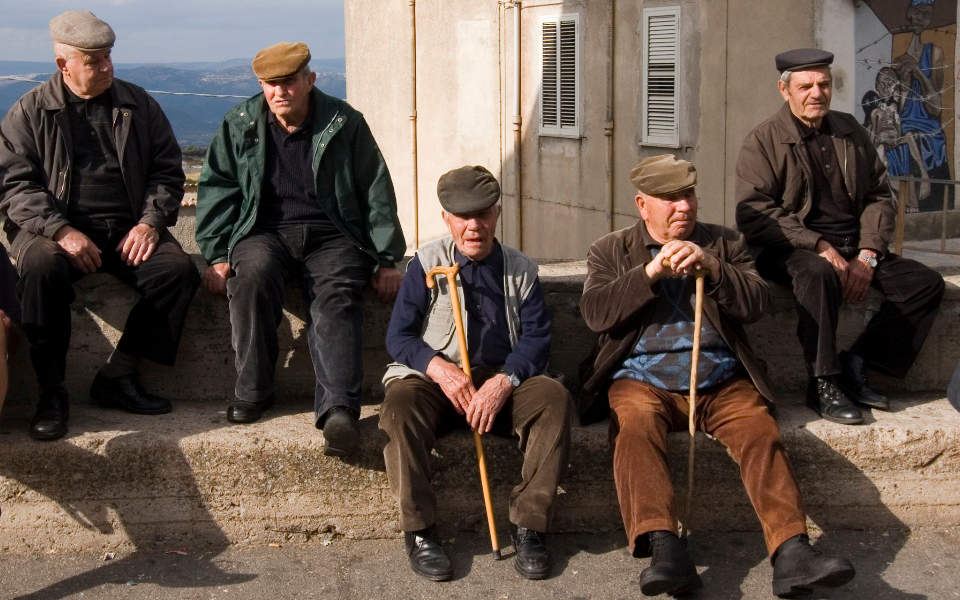
This is a project – based on the principles of the Blue Zones – that helps communities live better and longer by making healthy choices easier. The project helps communities through a number of solutions that are designed to positively impact overall well-being.
Buettner works together with municipal governments, large employers and health insurance companies to implement the Blue Zones project in workplaces, communities and universities.
The places, where we spend majority of our time, dictate how easy or difficult it is to make healthy choices.
Therefore, the approach focuses on the “life radius” – the places that people spend the most time, such as worksites, schools, restaurants, grocery stores and faith organisations.
The project has had great results – healthcare costs have decreased, productivity has increased and the people in these communities have a better quality of life.
Over 3 million people have been positively affected in North America by this initiative!
Let’s take a quick look at how the Blue Zones project makes the healthier choice the easier one!
1. Physical activity is more enjoyable
We have seen that the longest living people in the world live in places that cause them to move a lot.
Based on this principle, the project worked with city planners, schools and worksites so that people naturally move more every day.
The project also makes it more enjoyable to leave the house, to commute, to take part in activities, as well as making walking to local restaurants easier.
2. Healthy food choices are made easier
As well as making moving easier and more natural, the project positively impacts people’s food decisions.
The goal is to make healthier choices easier. And how do they do this? By working with worksites, grocery stores and restaurants to offer highly nutritious foods.
They also work with schools to help children make healthy choices.
3. Community
Connecting is another important factor that the project focuses on. Our health is influenced by the people that we spend time with. The project creates connections between people and community organisations, faith groups as well as other social activities.
This helps people connect to where they feel they belong. As we saw earlier, finding a group where you belong was one of the most important factors that contributed to a longer life.
4. Purpose
The final factor the project focuses on is purpose. This is achieved through mindfulness and purpose workshops. Here they teach how one can deal with stress, live in the moment and connect with their inner gifts.
The project then helps people to find opportunities to match their passions, so that they can feel a sense of purpose.
Conclusion
To conclude, we can see that even though the peoples lifestyles do differ slightly in the different regions of the blue zones, most of them share many commonalities.
They all eat a diet that’s mainly plant based, exercise often, get sufficient sleep and have strong family and social networks.
All of these factors have been linked to longevity and are incorporated into their lifestyle.
Healthy eating and physical activity is just a way of life for them, and something they had in common with all those they spent time. It’s not about diets, or going to the gym for these locals.
As Buettner said, there is no quick fix when it comes to longevity. You have to be willing to something for years or even decades.
So why don’t we build these habits into our lives?
Learning from the people in the Blue Zones and incorporating their lifestyle habits into our own life can make a big difference, and we can potentially add a few more years onto our lifespan!
One way to eat well is to emulate both the habits and the environment of these people. You want to set up your own environment for success, beginning with your home!
So ask yourself, how does your lifestyle compare to the people living in the Blue Zones? What are your current eating habits? Are you living in a way that’s going to help you live to your potential maximum life?
